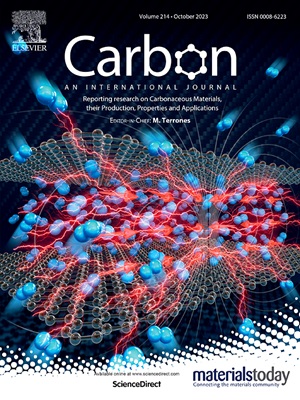Synthesis, properties, and applications of amphiphilic carbon dots: A review
IF 10.5
2区 材料科学
Q1 CHEMISTRY, PHYSICAL
引用次数: 0
Abstract
With the development of nanotechnology, the synthesis, properties, and applications of nanomaterials have become one of the research hotspots. Carbon dots (CDs) have attracted significant attention from these nanomaterials due to their superior optical properties, low toxicity, and good biocompatibility. As a novel kind of zero-dimensional carbon nanomaterial with fluorescence emission functions, CDs have been applied in many fields, such as bioimaging, environmental detection, and drug delivery. CDs can be classified as hydrophilic, hydrophobic, or amphiphilic depending on their dispersibility in different solvents. Amphiphilic carbon dots (ACDs) are CDs that simultaneously possess hydrophilic and hydrophobic characteristics and can be well dispersed in both aqueous and organic solvents. Compared with hydrophilic or hydrophobic CDs, they exhibit unique properties, such as solvatochromism effects, surface/interfacial activity, and emulsifying properties. Recently, ACDs have shown great potential in fields such as cell imaging, luminescent materials, and enhanced oil recovery. In this review, we summarize the research progress of ACDs, including synthesis methods, properties, and applications. Finally, we discuss the unresolved issues of ACDs and look forward to future development directions.

求助全文
约1分钟内获得全文
求助全文
来源期刊

Carbon
工程技术-材料科学:综合
CiteScore
20.80
自引率
7.30%
发文量
0
审稿时长
23 days
期刊介绍:
The journal Carbon is an international multidisciplinary forum for communicating scientific advances in the field of carbon materials. It reports new findings related to the formation, structure, properties, behaviors, and technological applications of carbons. Carbons are a broad class of ordered or disordered solid phases composed primarily of elemental carbon, including but not limited to carbon black, carbon fibers and filaments, carbon nanotubes, diamond and diamond-like carbon, fullerenes, glassy carbon, graphite, graphene, graphene-oxide, porous carbons, pyrolytic carbon, and other sp2 and non-sp2 hybridized carbon systems. Carbon is the companion title to the open access journal Carbon Trends. Relevant application areas for carbon materials include biology and medicine, catalysis, electronic, optoelectronic, spintronic, high-frequency, and photonic devices, energy storage and conversion systems, environmental applications and water treatment, smart materials and systems, and structural and thermal applications.
 求助内容:
求助内容: 应助结果提醒方式:
应助结果提醒方式:


